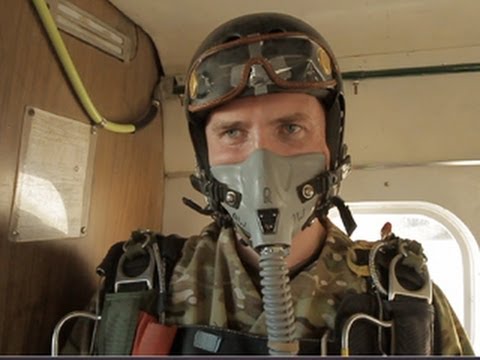HALO Jump: Behind the Jump
Main Video:
My page:
Tactical bracelets:
:
Shirts
Special Thanks to:
Andy Witcomb — Military Advisor & Safety Officer
Jeremie Chapin — Jumpmaster & Instructor
Paul Rodriguez – HALO Cameraman & AFF instructor
Pat Newman – AFF Cameraman & Instructor
Ben Summers –AFF Cameraman & Instructor
All the wonderful staff at Skydive Perris! You all have been amazing!
Special Operations Forces regulations define the requirements for safe operation and mission completion for HALO and HAHO. For day operations, supplemental oxygen must be used by all parachutists above 10,000 feet MSL in the aircraft if exposure exceeds 30 minutes. Oxygen is supplied either by inline oxygen or from portable cylinders. If there are extremes in temperature or physical exertion, the jump master for the HALO or HAHO jump can recommend supplemental oxygen at 5,000 feet MSL. Supplemental oxygen is used during the parachute descent for any jump above 13,000 feet MSL, and can be an option for jumps initiating below 13,000 feet MSL. For night operations, supplemental oxygen is required in the aircraft for all parachutists above 10,000 feet MSL while flying to the drop zone and is encouraged for altitudes above 5,000 feet MSL at the discretion of the jumpmaster. The HALO operations may be performed below 13,000 feet MSL once the parachutist has left the aircraft. The HAHO operations above 10,000 feet MSL must be performed with supplemental oxygen both in the aircraft and under the parachute canopy. Aircraft oxygen delivery systems must be capable of delivering 100 percent oxygen and supplemental oxygen settings with a mask which conforms to physiologic PRICE check procedures. Parachute canopy oxygen delivery systems such as a simple oxygen cylinder and mask must maintain the jumper’s oxygen hemoglobin saturation greater than 92 percent.
The cold is another factor jumpers must contend with. For every 1,000 feet you ascend, you lose 3.6 degrees Fahrenheit in temperature. In those conditions, knowing the wind-chill factor (a function of ambient temperature and wind speed) is important.
HALO & HAHO: Any time a military flight drops personnel or cargo at altitudes above 18,000 feet, specially trained aerospace physiology technician, nicknamed PTs, must fly on board. These technicians, who are experts in the field of human performance and the effects of flight on the body, monitor the aircrew and parachutists looking for signs of impairment caused by altitude. A physiology tech’s most critical duty is recognizing and treating those taken ill by the altitude. They administer to the sick until relieved by a flight surgeon.
Tags:
HALO jump “act of valor” ratedrr “rated rr” breakdown halo HAHO haho h.a.l.o. “high altitude” “low opening” “high opening” “skydive perris” skydive wingsuit “wing suit” skydiving military freefall parachute canopy vector mirage v3 cypress aff “accelerated free fall” swoop swooping navy seals “richard ryan”

